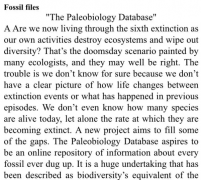2015年11月14日青岛朗阁雅思阅读考试真题回顾及解析A卷
来源:青岛朗阁
浏览:
发布日期:2015-11-17 09:52
摘要:2015年11月14日雅思阅读考试分为A卷和B卷,A卷考了哪些题目那?青岛朗阁小编第一时间为大家送上2015年11月14日雅思阅读考试A卷真题回顾及解析,希望对大家有所帮助~
2015年11月14日雅思阅读考试分为A卷和B卷,A卷考了哪些题目那?青岛朗阁小编第一时间为大家送上2015年11月14日雅思阅读考试A卷真题回顾及解析,希望对大家有所帮助~
青岛朗阁 张露元
Reading Passage 1 人类历史
Question types:人名观点配对题+选择填空题+填空题
题型难度分析:本文题目集中于人名观点配对题和填空题,为细节题,顺序做题,难度适中。
题型技巧分析
建议考生在做雅思人名观点配对题时不需要看完全篇再去做题,而是可以采用定位法去有的放矢的解决,这样既快捷高效地完成了阅读任务,也不再对阅读中的搭配题感到棘手和害怕了。今天要和考生们一起探讨的是如何处理有关人名观点配对中,人名多次出现的试题。
一、考题要点
A. 人名观点配对一般考察的是某个人的言论(statement)、观点(opinion)、评论(comment)、发现(findings or discoveries)。这样,一般这个题的答案在文中就只有两个答案区:
1. 人名边上的引号里面的内容;
2. 人名+ think /say /claim /argue /believe /report /find /discover /insist /admit /report... + that从句。
B. 人名在文中一般以以下方式出现:
1. 全称(full name), 如:Brian Waldron
2. 名(first name), 不常见
3. 姓(surname), 如:Professor Smith
4. He/she(在同一段话中,该人再次出现时,用指示代词替代)
因此,建议考生去文中找人名时,应该将上述四种情况均考虑进去。再者,应该谨记在心的是:如果一个人名在一段话中出现N次,也只能算一次。如果一个人名在N段话中出现,就算N次。
C. 该题的答案遍布于全文。因此应该从文章的开头往后依次寻找人名。
D. 该题貌似是全篇文章的考察,其实考察的就是这些人所说的几句话。故应先从文中找人名,再去找答案。
剑桥雅思推荐原文练习:剑5 test4 passage3
Reading Passage 2 Birds and Their Development
Question types:标题配对题+多选题
文章内容回顾
1.鸟类及其飞行能力。
2.鸟的进化和一些灭绝的鸟类
3.鸟类与哺乳类动物的不同
4.鸟类的繁衍
相关英文原文阅读
Birds are some of the most amazing animals on earth. Most have the ability to fly. Some use ground travel. Some use claws, others use only their beaks. Birds come in many varieties of colors and sizes. Birds are warm-blooded, egg-laying creatures from the aves class.
Along with the obvious feathers and wings, birds have other adaptations for flying such as a wide keel on the sternum, with large wing muscles attached, air spaces and sacs throughout the body and bones, to decrease their weight, and they have various bone fusions and reductions to strengthen and streamline their body. There are more than 8700 species of birds. Their habitats range from icy shores of Antarctica to the hottest parts of the tropics and from mountains, deserts, plains, and facts to open oceans and deeply urbanized areas. The sizes of birds range from the tiny bee hummingbird, which has atotal length of two and a half inches, to the albatross, which has a wing span of eleven and a half feet. The largest bird is a bird that cannot fly the ostrich. Ostriches can stand almost eight feet high and can weigh near 350pounds.
Other extinct birds have been measured to stand over ten feet high. The evolution of birds is still being argued. Most people believe that birds evolved from reptiles. Because of birds mainly delicate bones, few fossils have been left behind for scientists to study. The earliest bird fossils come from archaeopteryx. The fossils that have been discovered from archaeopteryx include six partial skeletons and one single feather. Archaeopteryx , unlike modern birds, had teeth, a reptile like tail, and three claws on each wings. Scientists think it could fly, but only weakly.
Approximately 85 species and 50 sub species have become extinct in the last 300 years. Over half of them occurred in the 1800's. Another thirty percent occurred in the 1900's. Over ninety percent of these extinction's were island forms, which are particularly vulnerable to human interference. Destruction of habitat is the biggest cause of extinction. Other causes are the introduction of predacious animals, and disease plays its part too. The respiratory system in birds serves to transfer oxygen to the bird’s bloodstream.
Unlike mammals, birds do not have sweat glands. So they cannot cool themselves through perspiring. Air sacs throughout the body are connected to the lungs. As the bird breathes, the airs sacs help cool the birds organs. The average body temperature of birds is about 106^0 F. Birds do not have any teeth. This means that birds must cut food up with their beaks or swallow it whole.
On a bird's esophagus their is a bag-like swelling called the crop. Bird's can store food there until there is room in the stomach for it. They can also store food their for their young. In most birds, the stomach is two parts. The first part is where digestive juices are added. The second part, called the gizzard, has thick, muscular walls for grinding up food. This replaces chewing.
A lot of birds help the grinding process by swallowing coarse materials like gravel. The nutritious matter is absorbed in the small intestine. Then waste matter moves on to the large intestine. All waste from birds release from the bird's vent in the rear of the body. The circulatory system distributes blood through the bird's body. The heart of a large bird, like an ostrich, beats approximately the same rate of human’s heart, 70 times a minute.
Other small birds, like a hummingbird, have heart beat of more than 1000 times a minute! Arteries in birds carry blood from the heart to organs in the body. Veins return blood to the bird's heart. A bird's nervous system consists basically of nerves and a brain. Nerves carry messages from a bird's senses to the brain and from the brain to the muscles. This provides a reaction to something. On a bird's brain, thecerebellum is relatively larger than a cerebellum on a mammal. The cerebellum is what birds use to control balance and the muscles they use to fly. Male birds have testes and the female birds have ovaries, just like in other vertebrates. Most birds mate by pressing their vents together. Sperm cells quickly pass into the female's vent and unite with one or more egg cells.
The union produces a fertilized egg, or a zygote. When the egg is laid, the zygote develops into an embryo as the egg is incubated.
题型难度分析:本篇文章还是以配对题作为主打题型,既有细节也有主旨,总体难度相对而言较高。
题型技巧分析
标题配对题(List of headings)是雅思阅读中的一种重要题型,要求给段落找小标题。它一般位于文章之前,由两部分组成:一部分是选项,另一部分是段落编号,要求给各个段落找到与它对应的选项,即表达了该段中心思想的选项,有时还会举一个例子。当然,例子中的选项是不会作为答案的。
解题思路:
1. 将例子所对应的选项及段落标号划去
2. 划出选项中的关键词及概念性名词
3. 浏览文章,抓住各段的主题句和核心词(尤其是反复出现的核心词),重点关注段落首句、第二句与末句
4. 与段落主题句同义或包含段落核心词的选项为正确答案
剑桥雅思推荐原文练习:剑6 Test 4
Reading Passage 3 潮汐能源
Question types:判断题+填空+选择题
题型难度分析:判断题和选择题同时出在一篇passage内,且难度都较大,无疑加大了整体的难度。
题型技巧分析
1.雅思阅读判断题型题目会提供一组陈述。如果是意见或看法,考生需回答这些陈述是否符合或反映了作者的观点或看法。答案的形式有“是”(YES)、“否”(NO)、或“无从判断”(NOT GIVEN)。如果陈述涉及事实性信息,考生需回答这些陈述是否与文章中的信息一致。答案的形式有“一致”(TRUE)、“不一致”(FALSE)、或“无从判断”(NOT GIVEN)。这种题型考察考生进行跳读、扫读和对细节进行阅读理解的能力。
2.题干与原文截然相反,有明显矛盾.答案是No。
题干的内容原文根本没有提到,即题目在原文中找不到根据。答案选NOT GIVEN。
3.解答雅思阅读判断题的时候,大家可以从下面的几点入手:
找出题目中的关键词,最好先定位到原文中的一个段落。
将题目中的关键词与原文各段落的小标题或每段话的第一句相对照。有些问题能先定位到原文中的一个段落,这将大大加快解题时间,并提高准确率。但并非每个题目都是如此.
从头到尾快速阅读该段落,根据题目中的关键词,在原文中找出与题目相关的一句或几句话。
确定一个段落后,答案在该段落中的具体位置是未知的。所以,需要从头到尾快速阅读该段落,找出该段落中与题目相关的一句话或几句话,通常是一句话。
仔细阅读这一句话或几句话,根据第二大步中的原则和规律,确定正确答案。
要注意顺序性,即题目的顺序和原文的顺序基本一致。按照问题的顺序,第一题的答案应在文章的前部,第二题的答案应在第一题的答案之后。这个规律也有助于大家确定答案的位置。然后就是根据原文判断正误了。我们总结了几个原则,可以帮助大加快速找到答案。
剑桥雅思推荐原文练习:剑7 Test 3 passage3(判断+选择)

扫二维码,添加朗阁咨询老师,备注“官网”
免费领取雅思、托福备考计划、精选资料,最新口语新题考点资料
25
2022-06
-
2020年1月16日雅思听力考试真题
2020年1月16日雅思考试已经结束,正在备考雅思的小伙伴,你们想要知道这次考试的听力部分都...
25
2022-06
-
2020年1月16日雅思阅读考试真题
正在进行雅思备考的小伙伴,你们想知道2020年1月16日雅思考试的考试内容吗?今天为了帮助大家...
25
2022-06
-
2020年1月16日雅思写作考试真题
今天为了帮助正在进行雅思备考的小伙伴更好的准备雅思考试,青岛朗阁雅思写作名师 费晓静...
25
2022-06
-
2020年1月16日雅思口语考试真题
今天青岛朗阁雅思口语名师张开翼为大家整理了2020年1月16日雅思口语考题总结,分析了雅思口...
04
2020-12
-
2020年11月14日朗阁雅思听力考题回顾
今天,要和大家分享的是2020年11月14日朗阁雅思听力考题回顾,希望这篇文章能够对大家的学习...
04
2020-12
-
2020年11月14日朗阁雅思阅读考题回顾
今天,要和大家分享的是2020年11月14日朗阁雅思阅读考题回顾,希望这篇文章能够对大家的学习...
热门课程
大家都在看
阅读(2095)
阅读(1965)
阅读(1942)
阅读(1323)
阅读(1093)
阅读(831)







